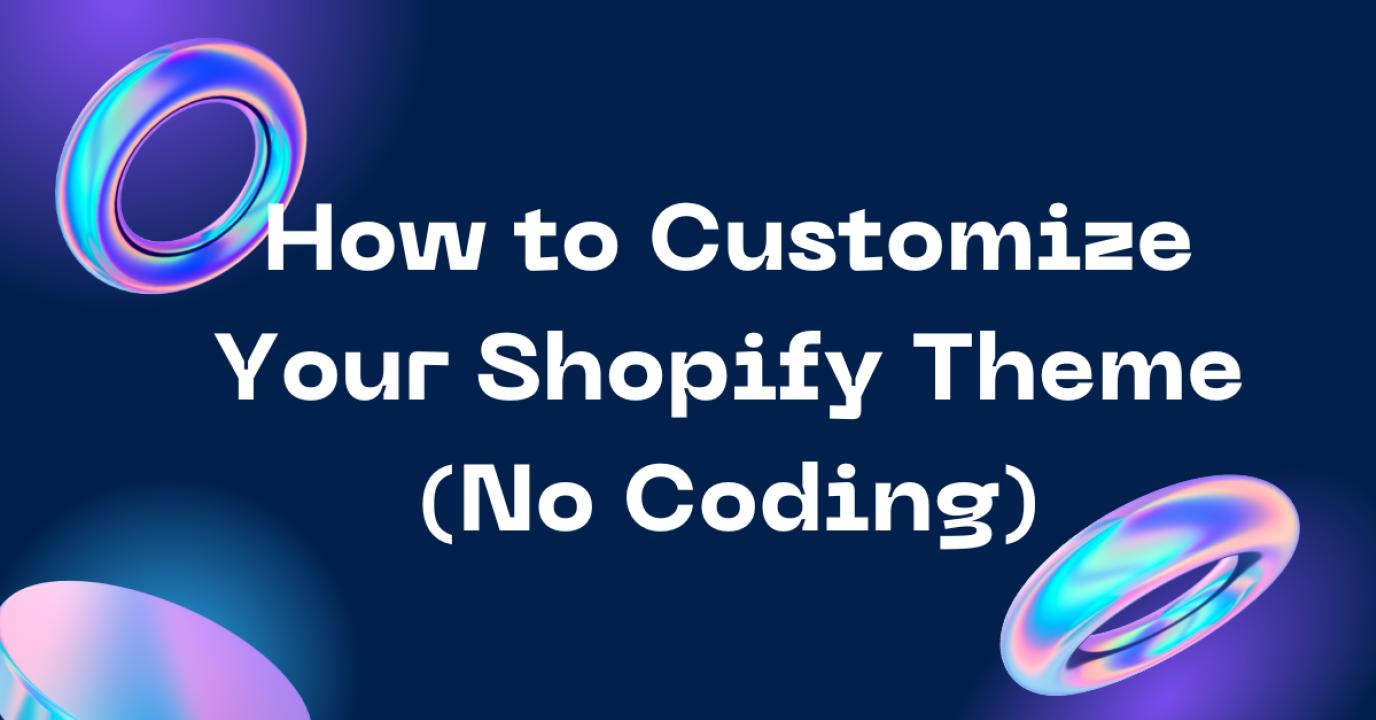Starting
an online business has never been easier, thanks to platforms like Shopify that
simplify the process of setting up and customizing your online store. But while
getting started is straightforward, making your store look unique and
professional requires a bit of personalization. The good news? You don’t need
to know how to code to make your Shopify store stand out. In this blog, we’ll
cover everything you need to know about customizing your Shopify theme, no
coding required, to promote your brand and boost sales.
Why Customize Your Shopify Store?
When you
choose a Shopify theme, it comes with pre-set images,
fonts, and colors that showcase its full potential. But to make it truly yours,
you’ll need to personalize it to match your brand. Customizing your Shopify
theme can help you:
- Reflect Your Brand Identity: Make your store feel more like your business by incorporating your logo, colors, and unique >
- Improve User Experience: A well-designed store is
easy to navigate, keeping customers engaged and increasing the likelihood
of sales.
- Boost Sales: A tailored shopping
experience can help you highlight the most important products and
promotions, making it easier for customers to find what they’re looking
for.
Whether
you choose to customize your store yourself or hire a developer, this blog will
guide you through some of the best ways to get your store looking its best.
Should You Hire a Developer or Customize Your Store
Yourself?
Before
diving into the customization process, it’s important to decide whether you
want to do it yourself or hire a professional. Both options have their
advantages:
- Hiring a Developer: If you’re new to web design
or need advanced functionality, hiring a Shopify expert can be a smart investment.
They can help bring your vision to life and optimize your store for better
performance.
- DIY Customization: If you’re comfortable with
basic design changes or want to save costs, Shopify’s user-friendly theme
editor makes it easy to adjust the look and feel of your store without any
coding skills.
For most
store owners, a mix of both approaches is ideal—start with DIY customization
for the basics, and then consult a developer for more complex adjustments as
your business grows.
Five Ways to Customize Your Shopify Store
Ready to
make your Shopify store uniquely yours? Here are five ways to customize your
store without writing a single line of code:
1. Find the Perfect Theme
Your
theme sets the foundation for your store’s design. Shopify offers a variety of
themes—both free and paid—in the Shopify Theme Store. The right theme will
align with your brand’s needs, from catalog size to features like age
verification, infinite scroll, or store locator.
- Free Themes: Great for small or new
stores, free themes offer a clean, simple look with fewer customization
options.
- Paid Themes: These themes range from
$180 to $350 (one-time fee) and offer more robust features, better design
flexibility, and additional ecommerce tools.
Take your
time exploring the options in the Theme Store and choose one that best matches
the functionality you need. You can always customize the look and feel after
selecting your theme.
2. Edit Your Theme Settings
Once
you’ve selected a theme, it’s time to make it your own! You can access the
theme editor through your Shopify dashboard by going to Online Store >
Themes and clicking Customize next to your chosen theme. Here’s what
you can adjust:
- Color Palette: Adjust your theme’s colors
to align with your brand. If you have a logo, start with those colors.
Don’t have a logo yet? Use free online tools like Color Hunt to find
inspiration.
- Fonts: Typography is a key part of
branding. Stick to 2-3 fonts to maintain a clean look. Use bold or larger
fonts for headings and simpler fonts for body text to create a visual
hierarchy.
3. Create Page Templates
Consistency
is key when building a recognizable brand. Shopify’s template feature allows
you to create reusable layouts for different types of pages like product pages,
landing pages, and blog posts. This helps maintain a consistent look throughout
your store and saves time in the long run.
- Templates: Use templates for
frequently used pages to maintain a uniform design across your store.
- Sections: Create smaller reusable
content blocks (e.g., contact forms or newsletter signups) that can be
added across different pages, ensuring a cohesive look.
To create
a template or section, navigate to your theme editor, click + Add section,
and choose the type of content block you want to add.
4. Customize Your Store with Shopify Apps
Shopify
has an extensive app marketplace that can help you add more functionality to
your store. Here are a few ways you can use apps to enhance your store:
- Optimize Search: Use apps like Shopify
Search & Discovery to improve the search functionality in your
store.
- Add Customer Reviews: Apps like Judge.me
and Product Reviews can help you gather and display reviews,
providing social proof to new customers.
- Build Landing Pages: Drag-and-drop editors like Shogun
make it easy to create custom landing pages that convert.
Simply
find the app that meets your needs, install it, and customize it through the
app’s settings.
5. Use App Embeds for Extra Functionality
App
embeds are elements that float or overlay on your store’s design—such as a live
chat bubble or tracking code—that don’t require manual code insertion. For
example, if you use a chat app to interact with customers in real time, the app
embed will automatically add the chat feature to your store.
To
customize app embeds, go to App embeds in the theme editor, choose the
app you want to manage, and use the toggle to activate or deactivate it. This
makes it easy to add or remove features without any coding knowledge.
Final Thoughts: Your Shopify, Your Way
Customizing
your Shopify store allows you to create a shopping experience that is tailored
to your brand and your customers. By choosing the right theme, adjusting colors
and fonts, creating templates, and using apps for added functionality, you can
build a store that looks professional and performs well—no coding required.
















